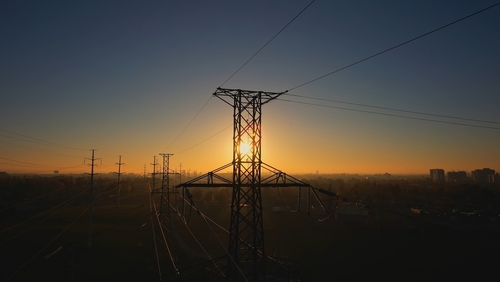
Valley Forge, Pa.-headquartered PJM Interconnection LLC, the largest electrical grid operator in North America, is part of a multiyear collaboration designed to hasten the company’s interconnection of new generation resources using artificial intelligence (AI).
PJM said Thursday that the new project with Alphabet Inc.’s Google and Tapestry will help it deploy AI-enhanced tools to further streamline PJM’s interconnection planning process for the 67 million people that it serves in its territory, which includes Pennsylvania, 12 other states, and Washington, D.C.
“Innovation will be critical to meeting the demands on the future grid, and we’re leveraging some of the world’s best capabilities with these cutting-edge tools to further reduce completion times for new service requests,” said Aftab Khan, PJM’s executive vice president of operations, planning and security. “PJM is committed to bringing new generation onto the system as quickly and reliably as possible.”
The goal of the joint effort is to slash processing times for reviewing new interconnection applications so that large volumes of requests can be processed faster and more accurately to meet the fast-growing demand for electricity in PJM’s service area.
Tapestry will work with PJM on developing and deploying a new set of AI tools and models to intelligently manage and optimize PJM’s generation interconnection process, Alphabet’s world-leading AI research lab.
PJM said it is looking at AI, and specifically its work with Tapestry, to help improve planning tools to further expedite PJM’s processing of generation resources that will be needed to meet continued increased demand in future years.
“AI can play a pivotal role in improving and expanding the electricity system while maintaining reliability and security,” said Page Crahan, general manager of Tapestry. “We will deliver a set of collaborative AI tools that enable PJM to make faster decisions with greater confidence, making more energy capacity available to interconnect in shorter time frames and helping to integrate the many dynamic resources looking to join the grid.”
PJM also said that its collaboration with Google and Tapestry will complement its ongoing efforts to automate its planning processes as it implements the reformed interconnection process that began in July 2023.
PJM will process the remaining 67 gigawatts (GW) of projects, out of some 200 GW, in the transition phase that begins this year and runs into next year. PJM also will initiate its new Cycle process in early 2026, and said its recently announced Reliability Resource Initiative will allow expedited entry of selected projects in the transition phase.
“This initiative brings together our most advanced technologies to help solve one of the greatest challenges of the AI era — evolving our electricity systems to meet this moment,” said Amanda Peterson Corio, head of data center energy for Google. “We see the opportunity to help secure America’s electricity needs with the many resources seeking to provide energy to the grid, and believe this work with PJM is a great catalyst for innovation across the United States.”